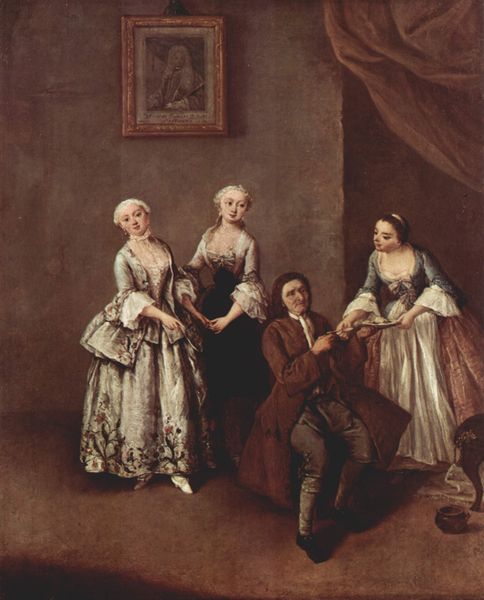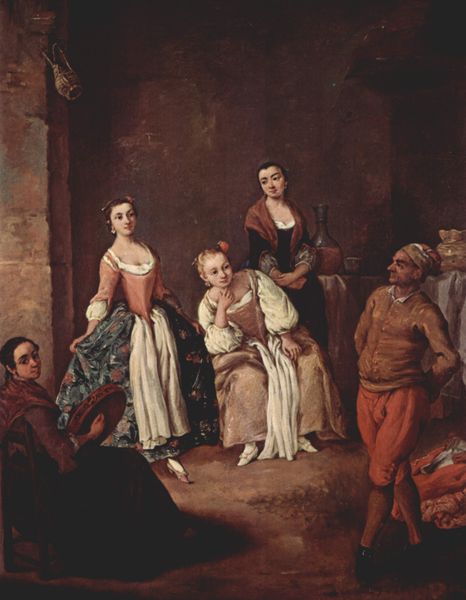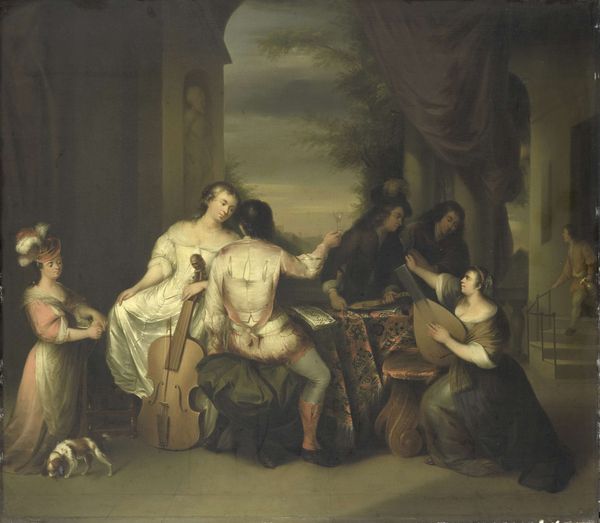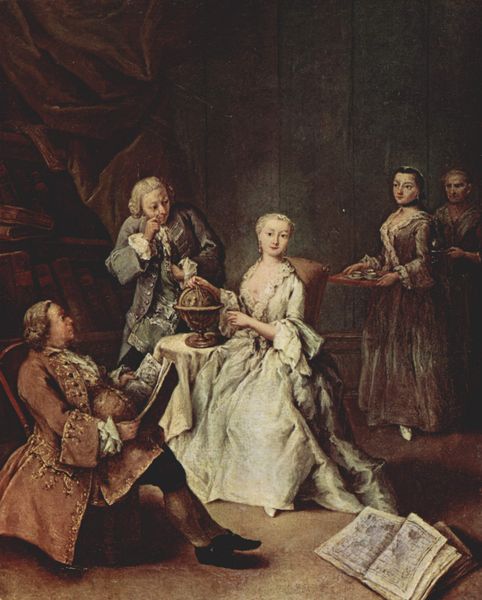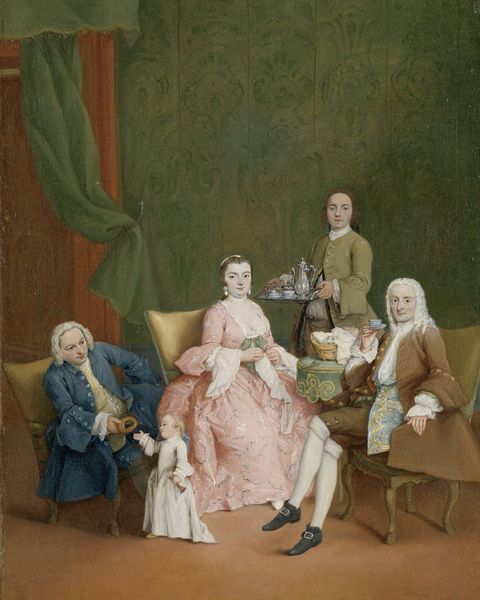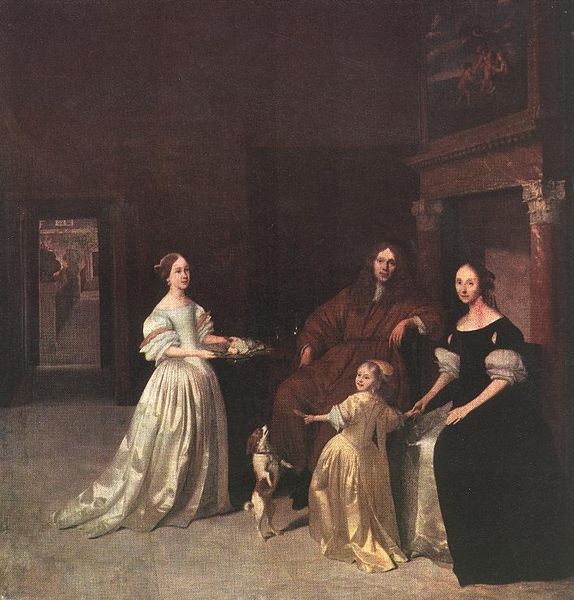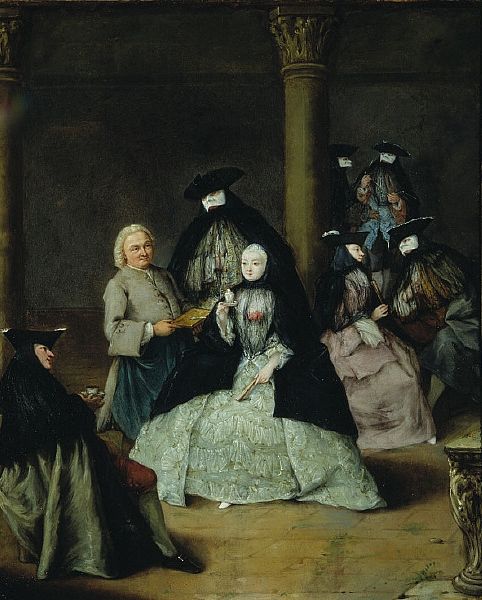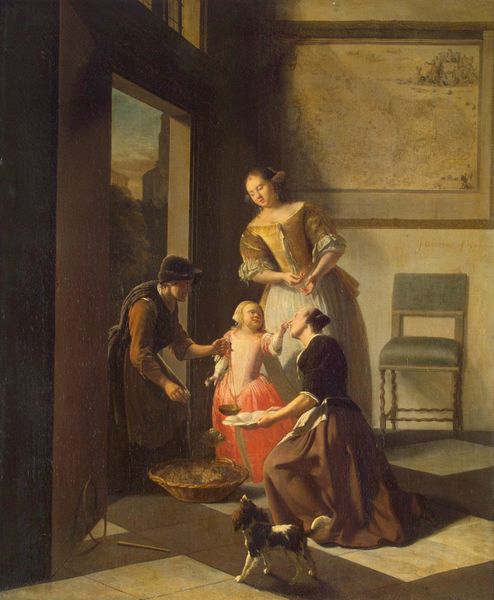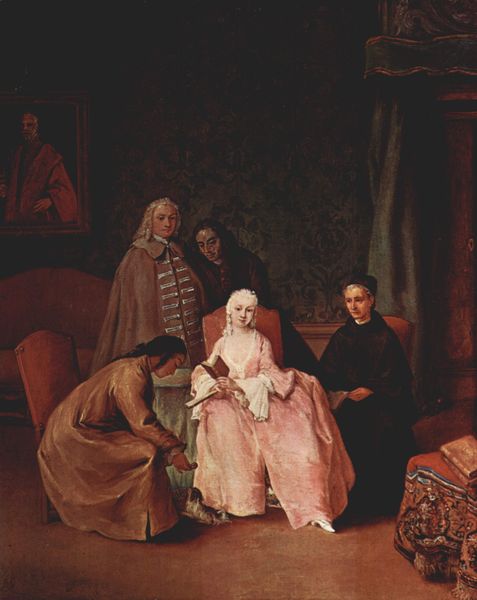
painting, oil-paint
#
portrait
#
narrative-art
#
painting
#
oil-paint
#
figuration
#
oil painting
#
group-portraits
#
genre-painting
#
italian-renaissance
#
rococo
Copyright: Public domain
Curator: Let’s talk about Pietro Longhi’s “The Family Concert,” created around 1760. It's an oil painting currently residing at Ca' Rezzonico in Venice. What are your initial thoughts? Editor: It feels surprisingly… contained. Despite the subject matter – music, socializing – there's a stillness, almost a melancholic air about the subjects portrayed in oil paint. The colors are muted. The overall impact to my eyes is subdued. Curator: That subdued atmosphere is interesting, particularly if we consider it within the context of the rococo period and the role of the artist Longhi within Venetian society. Longhi was capturing scenes of everyday life among the Venetian elite. He gives the genre a stage. Editor: Exactly, and that brings to mind questions of class, representation, and access. Who is being represented, and more importantly, who *isn't*? This isn’t just a simple depiction of a family, is it? The lady seems like an elite as evidenced by her gown. And also what is the power dynamics between those depicted as subservient like the likely maid holding onto her arm. Curator: Certainly not. The composition subtly directs our gaze. Notice how the musician, centrally placed, commands attention, literally orchestrating the scene. We see wealth on display but what's underlying. Editor: Indeed. How does this "family concert" perform or subvert expected roles for women in 18th-century Venetian society, then? Is it reinforcing the patriarchy with these staged scenes, the family as entertainment for themselves, or revealing something more critical? Does the artwork function as some form of visual documentation, social commentary or critique about the cultural milieu. Curator: The question of the power dynamics in gender, in that snapshot is important. Longhi certainly leaves space for different readings, showing both the conventions and the potential contradictions within them. What are the people doing but entertaining themselves in a stage created for them. Editor: The setting seems controlled. Even with those rococo cues—the curves of the instrument, the draping curtain— the subjects remain stilted and the work as a whole hints at restraint in their narrative as it might relate to Venetian power and hierarchies. Curator: Precisely, it provides layers, and those can then offer some interesting critical analysis of not only Longhi’s choices as a painter and a narrator but as a tool through which to understand the era it presents, and those present on the artwork. Editor: Definitely, this has broadened my perspective to see it beyond an image to be something that embodies the society and the struggles it reflects.
Comments
No comments
Be the first to comment and join the conversation on the ultimate creative platform.

